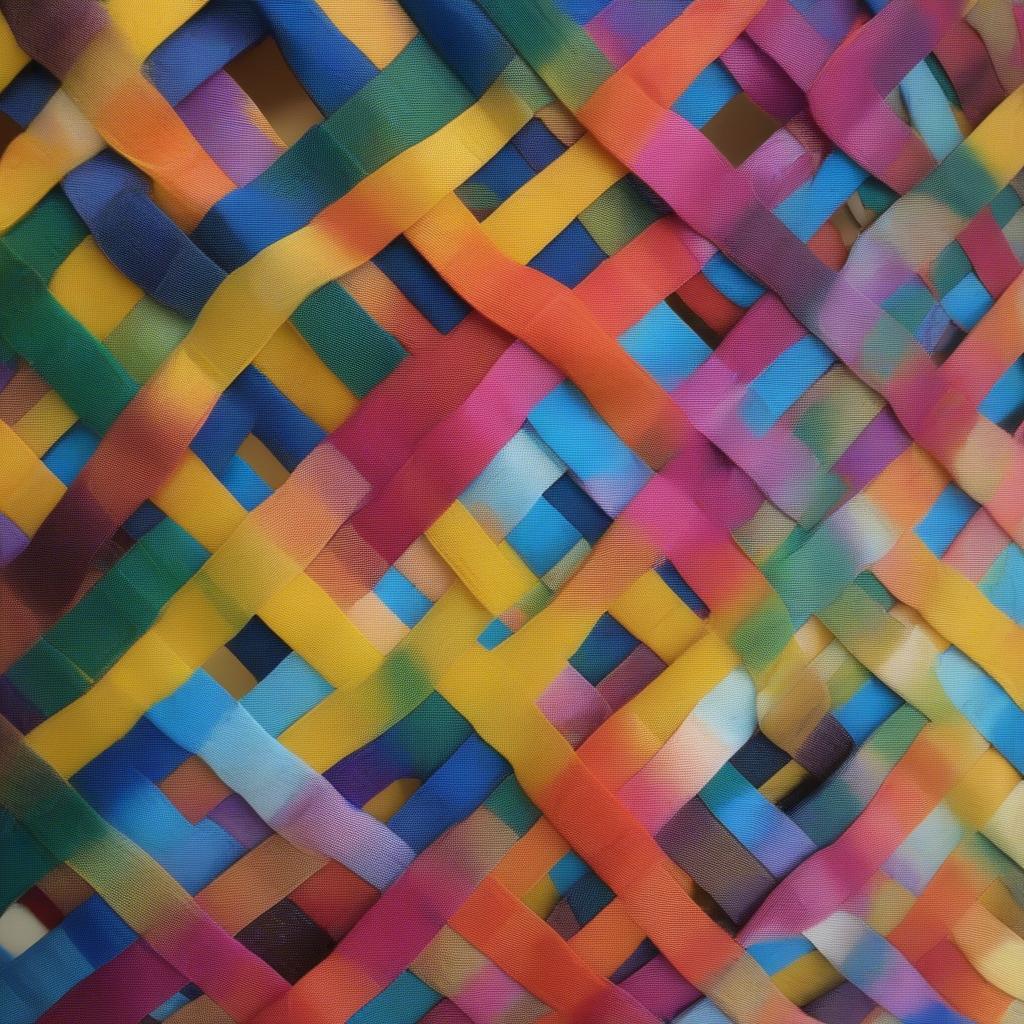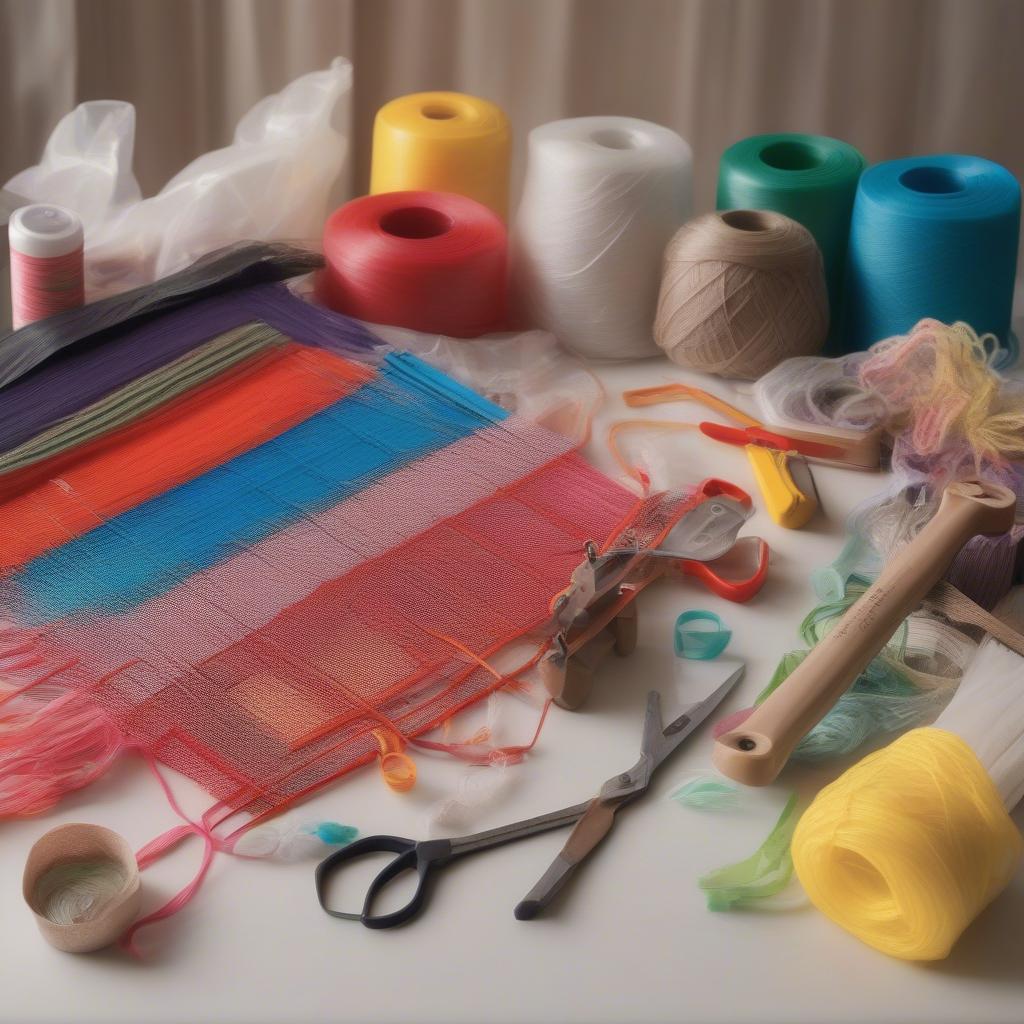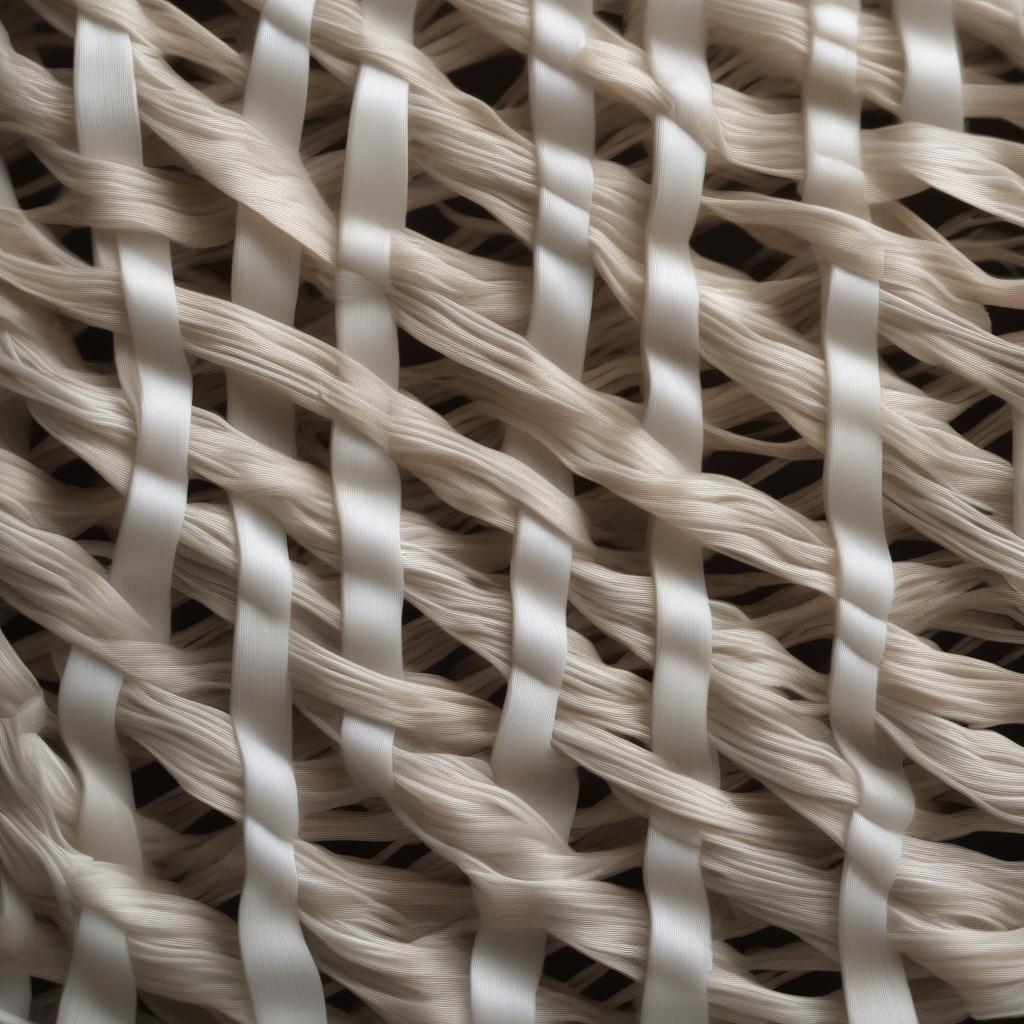Woven Bag
Woven Plastic Mats Made From Plastic Bags: A Sustainable Crafting Guide
Woven plastic mats made from plastic bags offer a creative and eco-friendly solution to repurposing plastic waste. This guide explores the art of crafting these durable and versatile mats, from collecting and preparing plastic bags to mastering weaving techniques and exploring design possibilities.
Transforming Trash into Treasure: The Art of Plastic Bag Weaving
Plastic bag weaving is more than just a craft; it’s a sustainable practice that transforms everyday waste into functional and beautiful items. This eco-conscious approach not only reduces landfill burden but also empowers individuals to create unique, handcrafted pieces. From simple placemats to intricate rugs, the possibilities are endless. Are you ready to discover the magic of weaving with plastic bags?
 Colorful woven plastic bag mat with intricate design
Colorful woven plastic bag mat with intricate design
Gathering Your Materials: What You’ll Need to Get Started
Before embarking on your weaving journey, gather the necessary materials. You’ll need plenty of plastic bags, preferably in various colors and thicknesses. Scissors, a ruler or measuring tape, and a sturdy weaving loom or frame are also essential. While optional, a crochet hook can be helpful for certain weaving techniques.
- Plastic Bags: The stars of the show! Collect a variety of colors and thicknesses to create unique patterns and textures.
- Scissors: Sharp scissors are essential for cutting the plastic bags into consistent strips.
- Ruler/Measuring Tape: Ensure uniform strip widths for a neat and professional finish.
- Weaving Loom/Frame: Provides a stable base for weaving and helps maintain even tension.
- Crochet Hook (Optional): Useful for certain weaving techniques and finishing touches.
 Essential materials for plastic bag weaving, including loom, scissors, and plastic bags
Essential materials for plastic bag weaving, including loom, scissors, and plastic bags
Preparing the “Yarn”: Creating Plarn (Plastic Yarn)
The key to successful plastic bag weaving lies in creating uniform strips of “plarn,” or plastic yarn. This involves flattening, folding, and cutting the bags into continuous loops. The width of your plarn will determine the final texture and density of your mat.
- Flatten and Fold: Smooth out each plastic bag and fold it lengthwise several times.
- Cut into Strips: Cut across the folded bag, creating loops of consistent width.
- Connect the Loops: Join the loops together by threading one loop through another, creating a continuous strand of plarn.
Weaving Techniques: From Basic to Advanced
Several weaving techniques can be used to create woven plastic mats made from plastic bags. The basic over-under method is a great starting point for beginners. More advanced techniques, such as twining and soumak, can add intricate textures and patterns to your mats.
- Basic Over-Under: A simple and effective technique suitable for beginners.
- Twining: Creates a tighter weave and adds a decorative element.
- Soumak: Adds a raised texture and allows for more complex patterns.
 Close-up view of a woven plastic bag mat showcasing the texture
Close-up view of a woven plastic bag mat showcasing the texture
Design and Finishing Touches
Let your creativity shine by experimenting with different colors, patterns, and shapes. Consider incorporating other recycled materials, such as fabric scraps or old t-shirts, to add unique textures and visual interest. Once your mat is complete, secure the ends of the plarn and add finishing touches like tassels or fringe.
Conclusion: Weaving a Sustainable Future
Woven plastic mats made from plastic bags are a testament to the power of creativity and sustainability. By transforming discarded plastic into beautiful and functional items, we can contribute to a cleaner planet while enjoying the satisfaction of crafting something unique with our own hands.
FAQ
-
How many plastic bags do I need for a mat? The number of bags depends on the size and thickness of the mat. A small placemat might require 20-30 bags, while a larger rug could need hundreds.
-
Can I wash my woven plastic mat? Yes, these mats are generally easy to clean. Simply wipe them down with a damp cloth or gently hand wash them with mild soap and water.
-
What can I do with leftover plarn? Leftover plarn can be used for a variety of other crafts, such as coasters, bags, or even jewelry.
Are you ready to turn your plastic bag collection into a beautiful and eco-friendly woven masterpiece? We encourage you to explore our other articles on upcycling and sustainable crafts.
For any assistance, please contact our 24/7 customer service at Hotline: +84 388 951 999, located in Hanoi, Vietnam or Tech Avenue, Suite 12, San Francisco, CA 94105, USA.
